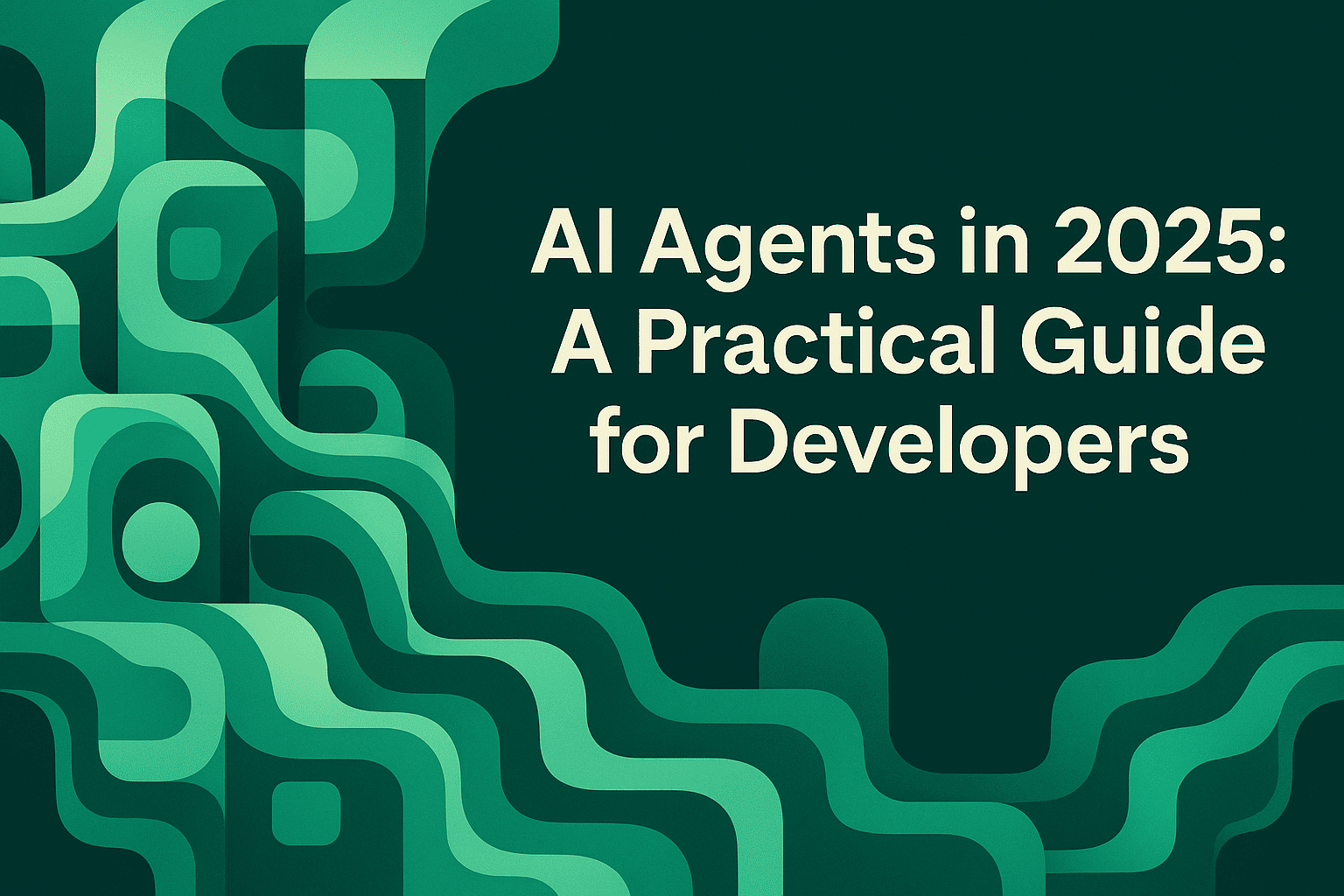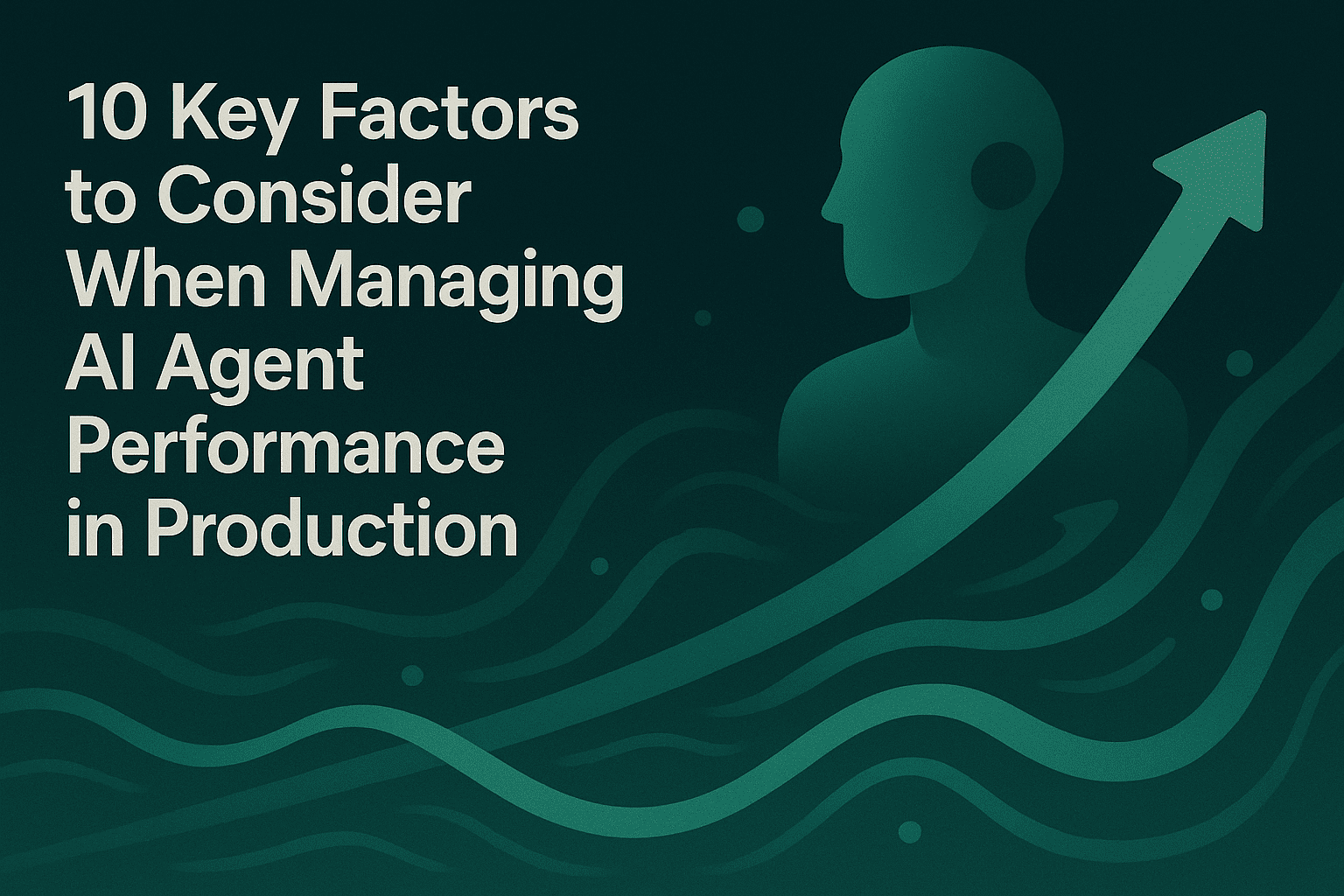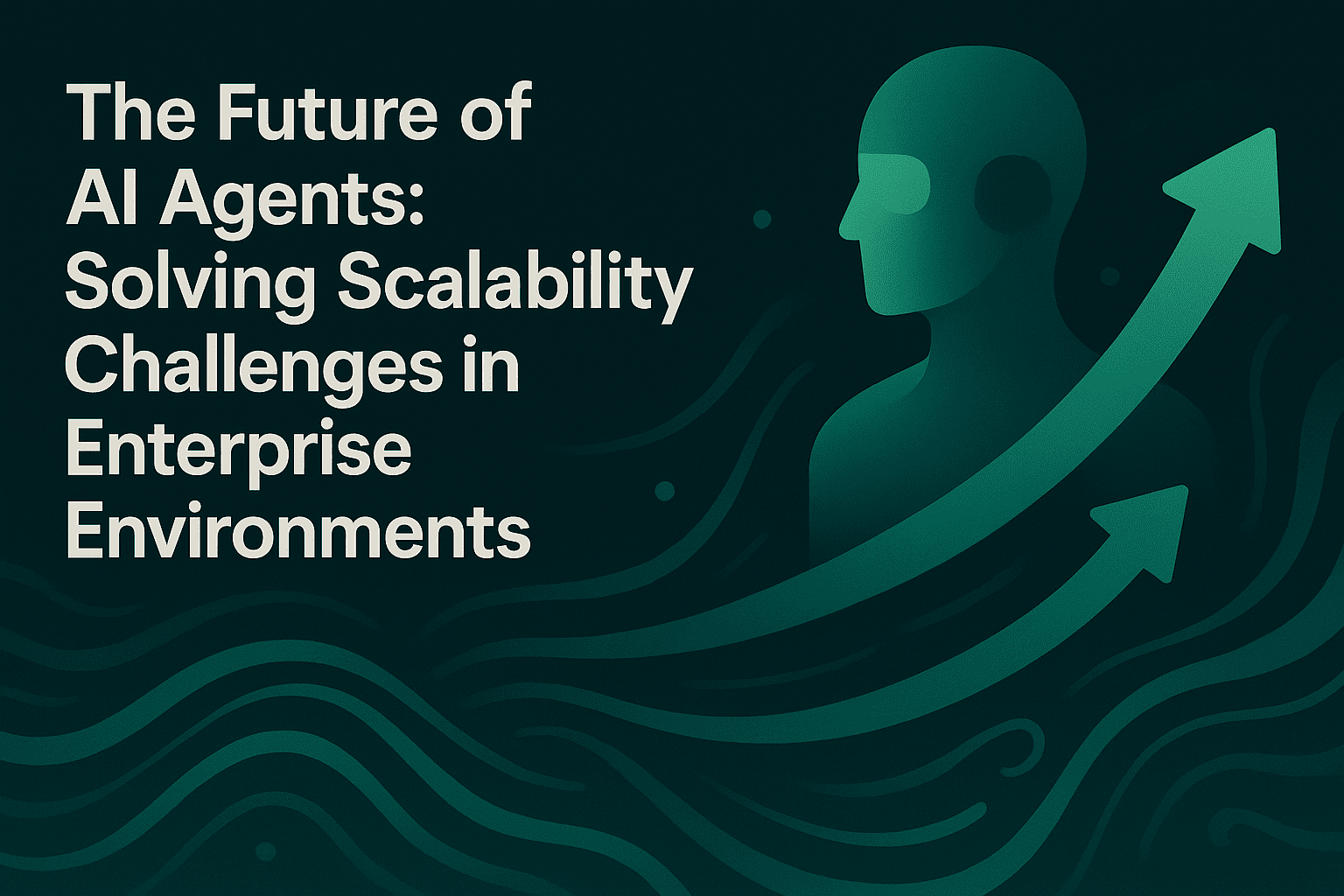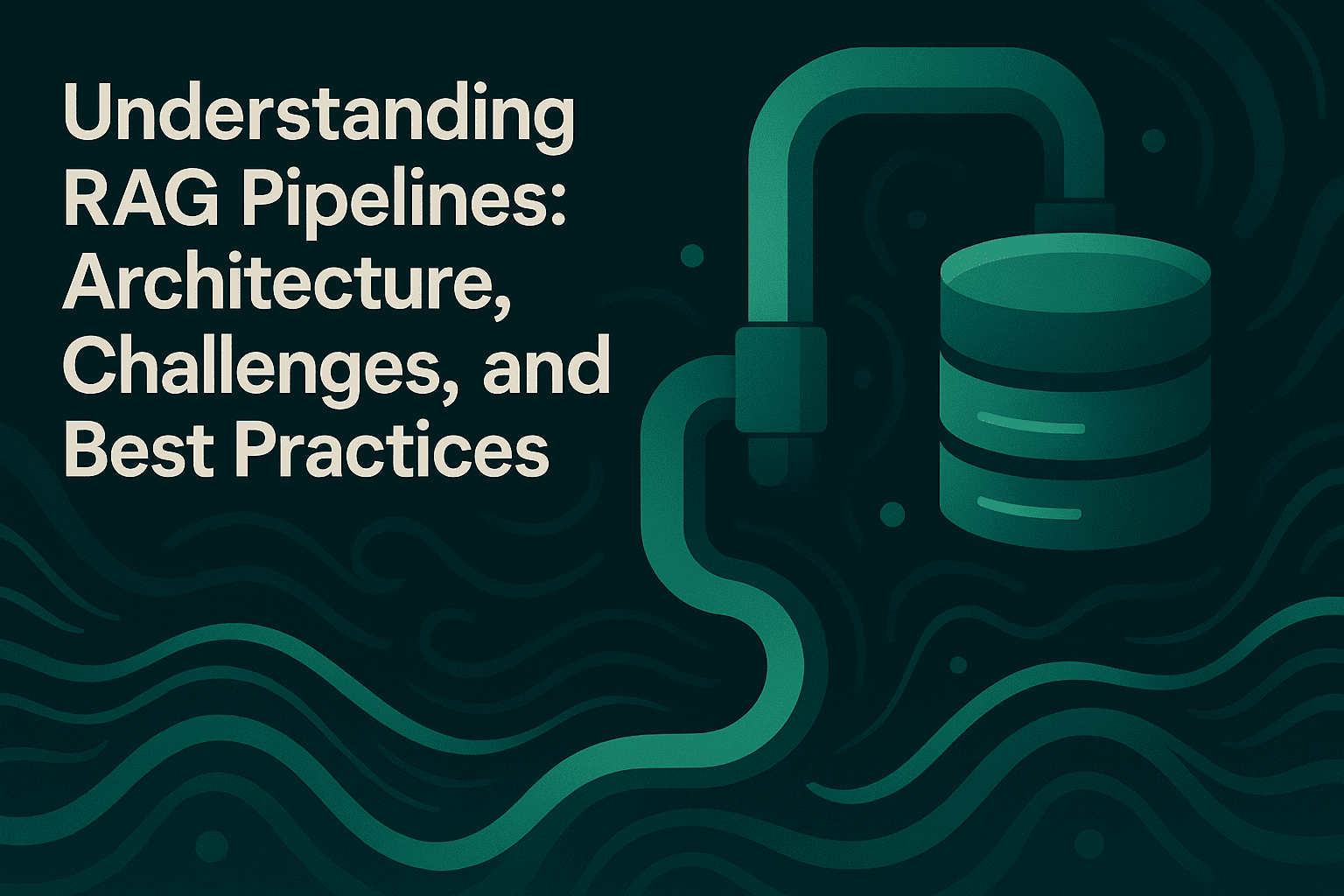AI Agents in 2025: A Practical Guide for Developers

TL;DR
AI agents in 2025 are production systems that orchestrate models, memory, tools, and workflows to complete tasks with minimal human intervention. Building reliable agents requires seven layers: the generative model, knowledge base and RAG, orchestration/state management, prompt engineering, tool calling and integrations, evaluation and observability, and enterprise interoperability. Use a high‑performance gateway for multi‑provider access, version prompts, trace agents, and run scenario‑based evals before and after deployment. Platforms like Maxim AI provide end‑to‑end coverage across experimentation, simulation, evaluation, and observability with distributed tracing, automated evals, data curation, and SDKs for Python/TS/Java/Go. See docs for product capabilities and implementation details. Maxim Docs
Introduction
AI agents are autonomous systems that plan, act, and iterate through multi‑step workflows using models, context, and external tools. In enterprise settings, agents must be dependable, measurable, and controllable, with safeguards for cost, latency, security, and quality. A robust agent architecture includes a high‑quality LLM, structured memory and RAG, stateful orchestration, precise prompts, deterministic tool execution, and continuous evaluation and observability. Reliability post‑production depends on distributed agent tracing, automated evals, human‑in‑the‑loop review, and governance. For an end‑to‑end approach to agent quality, see the overview in Maxim Docs.
Essential Components of AI Agents
1) Generative Model
A generative model (usually a LLM) is the core reasoning and language layer. Model selection directly affects cost control, latency, output quality, reliability, and task fit. Engineering teams often route across multiple providers to balance throughput and risk, and use semantic caching to cut costs for repeated queries. A high‑performance AI gateway with automatic fallbacks and load balancing improves uptime while preserving a unified API surface. For a multi‑provider, OpenAI‑compatible gateway with failover, rate limiting, semantic caching, and observability, review the Bifrost capabilities in Maxim Docs.
Key practices:
- Choose models by task type (classification, generation, tool‑use) and latency SLOs.
- Use a gateway to abstract providers and enable automatic failover and load balancing.
- Track cost and performance with native metrics and logs via observability.
2) Knowledge Base and RAG
Agents need short‑term conversation state and long‑term domain knowledge. Retrieval‑Augmented Generation (RAG) augments prompts with grounded context from a vector index and authoritative data sources. Production RAG pipelines should log retrieval results, measure rag evaluation and faithfulness, and detect hallucinations with automated checks and human review. Observability across spans—retrieval, ranking, augmentation, generation—makes failures reproducible.
Best practices:
- Maintain clean embeddings and versioned corpora for reproducible outputs.
- Evaluate RAG with span‑level metrics (recall, precision of retrieved chunks, answer faithfulness).
- Curate datasets from production logs for continuous improvement.
See evaluation and observability features for RAG pipelines in Maxim Docs.
3) Agent Orchestration Framework
Complex tasks require planning, tool choice, error handling, and state management across multi‑step conversations. Orchestration frameworks structure agents as graphs of nodes/spans, enabling retries, guardrails, and sub‑tasks. Visual, low‑code/no‑code flows let product teams configure scenarios and workflows without heavy engineering dependence. Cross‑functional collaboration improves iteration speed and quality.
Key capabilities:
- Task decomposition and stateful execution with distributed agent tracing.
- Node‑level retries and error routing for resilience.
- Scenario libraries and persona simulations to stress‑test edge cases.
Explore agent simulation and evaluation workflow in Maxim Docs.
4) Prompt Engineering
Prompts encode system policies, context windows, tool instructions, and evaluation hooks. Teams should version prompts, compare variants across models, and measure impacts on cost, latency, and accuracy. A dedicated experimentation environment simplifies A/B testing and deployment of prompt versions.
Recommended workflows:
- Organize and version system and tool prompts in a prompt playground.
- Compare outputs across models and parameters; track regression with automated llm evals.
- Connect prompts to RAG pipelines and model router logic.
See experimentation and prompt versioning capabilities in Maxim Docs. For a perspective on security‑aware prompt practices, read this post on Maxim AI.
5) Tool Calling and Integration
Agents must select the correct tools to complete tasks. Deterministic function calling, structured outputs, API connectors, and information retrieval pipelines are central to quality. Integration layers should support HTTP endpoints, databases, search, and business systems under governance.
Core elements:
- Typed function schemas and schema validation for tool outputs.
- Guardrails to prevent unsafe calls; log all tool spans for auditability.
Review integrations and governance capabilities in Maxim Docs.
6) Evaluation and Observability Layer
Continuous ai observability is mandatory to detect regressions, drift, and incidents. Distributed llm tracing at session/trace/span makes bugs reproducible. Automated agent evaluation runs with custom rules, statistical checks, and LLM‑as‑a‑judge enable ongoing ai monitoring. Human‑in‑the‑loop evaluation provides nuanced quality decisions before and after deployment. Scenario simulation uncovers failure modes early.
Core capabilities:
- Real‑time production logging with alerts and dashboards.
- Automated evals on schedules, tied to model/prompt versions.
- Human reviews and data curation to build high‑quality test suites.
See observability and evaluation suite in Maxim Docs.
7) Easy Integration with Business Systems
Enterprise agents must fit into existing workflows and controls. SDKs for Python, TypeScript, Java, and Go, plus HTTP endpoints, ensure fast adoption. Governance features like budgets, virtual keys, rate limits, and SSO enforce operational policies. Native metrics and tracing integrate with Prometheus‑style monitoring.
Implementation considerations:
- Use SDKs or HTTP to instrument logs and span metadata.
- Enforce budgets and access controls across teams and tenants.
- Export metrics to standard observability stacks.
Explore SDKs, governance, and observability integrations in Maxim Docs.
Build Your AI Agent: A Practical Blueprint
- Generative Model: Start with a gateway that supports multiple providers, automatic fallbacks, load balancing, and semantic caching to meet latency and reliability goals. Route by task type and track cost with native observability. Maxim Docs
- Knowledge Base and RAG: Stand up a vector database and document store, instrument retrieval spans, and run rag evals for faithfulness and grounding. Curate datasets from logs for continuous improvement. Maxim Docs
- Orchestration: Define agent graphs with node‑level retries, error handling, and tool selection. Use simulation to test hundreds of personas and scenarios and analyze trajectory outcomes. Maxim Docs
- Prompt Engineering: Version system/tool prompts, experiment across models, and quantify trade‑offs in cost/latency/quality. Promote winning variants with change tracking. Maxim Docs
- Tool Calling: Implement typed function schemas, structured outputs, and validated inputs. Log every tool call for auditability. Maxim Docs
- Evaluation & Observability: Enable distributed tracing, automated eval pipelines, and human‑in‑the‑loop reviews. Configure alerts on quality regressions and reliability incidents. Maxim Docs
- Enterprise Interoperability: Integrate via SDKs or HTTP endpoint, apply governance (budgets, rate limits, SSO), and export metrics to your monitoring stack. Maxim Docs
Conclusion
Production‑grade agents in 2025 require layered engineering: model routing, grounded RAG, stateful orchestration, disciplined prompting, deterministic tool use, and continuous agent observability and evals. Teams that formalize these layers ship reliably and scale faster. Maxim AI provides a full‑stack platform for experimentation, simulation, evaluation, and observability, with SDKs, governance, distributed tracing, and automated evaluations to operationalize agent quality. Explore capabilities and implementation details in Maxim Docs.
Ready to evaluate and monitor your agents end‑to‑end? Book a demo or sign up.
Additional reading and Resources:
- Top 5 AI Agent Frameworks in 2025: A Practical Guide for AI Builders
- Agent Frameworks to Finished Product: Your Cheat Code for Shipping LLM Features Fast
- Building Production-Ready Multi-Agent Systems: Architecture Patterns and Operational Best Practices
FAQs
- What is an AI agent in enterprise contexts?
- An AI agent is a system that plans, decides, and acts across multi‑step tasks using a model, memory/RAG, tools, and orchestration, with observability and governance for reliability. Maxim Docs
- How do I evaluate RAG faithfulness in production?
- Instrument retrieval spans, run automated evaluators for faithfulness/grounding, and add human‑in‑the‑loop checks; curate datasets from logs to refine pipelines. Maxim Docs
- Why use a gateway instead of a single provider?
- A gateway provides multi‑provider access, automatic fallbacks, load balancing, semantic caching, and unified APIs for resiliency and cost control. Maxim Docs
- What observability is required for agent debugging?
- Distributed agent tracing at session/trace/span, structured logs, real‑time alerts, and dashboards to reproduce issues and measure ai quality. Maxim Docs
- Can product teams contribute without code?
- Yes. Visual simulation/evaluation UIs, prompt versioning, and custom dashboards enable cross‑functional collaboration without deep code changes. Maxim Docs


